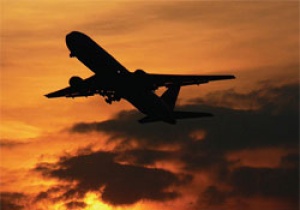IATA AGM 2014: Aviation safety tops agenda

The International Air Transport Association has released 2013 commercial aviation safety performance, revealing there were 210 fatalities from commercial aviation accidents in 2013, reduced from 414 in 2012.
The 2013 global Western-built jet accident rate (measured in hull losses per million flights of Western-built jets) was 0.41, the equivalent of one accident for every 2.4 million flights.
This was a step back from 2012 when the global Western-built jet accident rate stood at 0.21 - the lowest in aviation history.
Looked at over the five-year period (2009-2013), 2013 shows a 14.6 per cent improvement on the five-year average of 0.48.
The 2013 Western-built jet hull loss rate for members of IATA was 0.30, which outperformed the global average by 26.8 per cent and which showed an improvement over the five-year average of 0.32.
“Safety is our highest priority.
“The aviation industry is united in its commitment to ensure continuous safety improvement. Importantly, that commitment has made flying ever safer.
“Accidents, however rare, do happen.
“We release this data as the world continues to focus on the search effort for MH370.
“The airline industry, its stakeholders and regulators are in the beginning of the journey to unravel this mystery, understand the cause and find ways to ensure that it never happens again,” said Tony Tyler, IATA director general.
Safety in Numbers
More than three billion people flew safely on 36.4 million flights (29.5 million by jet, 6.9 million by turboprop).
There were a total of 81 accidents (all aircraft types, Eastern and Western built), up from 75 in 2012, but below the five-year average of 86 per year.
Some 16 of these were fatal accidents (all aircraft types), versus 15 in 2012 and the five-year average of 19.
A fifth of all accidents were fatal, unchanged from 2012 and below the five-year average of 22 per cent.
A total of 12 hull loss accidents involving Western-built jets were recorded, compared to six in 2012 and the five-year average of 13.
Six fatal hull loss accidents involving Western-built jets, raised from three in 2012, unchanged from the five-year average.
IOSA
Airlines on the IATA Operational Safety Audit Registry experienced six Western-built jet hull loss accidents.
The total accident rate (all aircraft types) for IOSA-registered carriers was more than two times better than the rate for non-IOSA carriers (1.46 vs. 3.60).
Today, 391 airlines are on the IOSA registry.
For IATA’s 240 airlines, IOSA is a requirement for membership in the association.
That some 151 non-member airlines are also on the registry is a clear indication that IOSA is the global benchmark for airline operational safety management.
“The overall performance of IOSA airlines shows that the audits are among the factors having a positive impact on safety.
“To increase the effectiveness of the IOSA process, we are upgrading to Enhanced IOSA which incorporates systems to monitor compliance across the two-year audit cycle.
“This is moving IOSA from a once-every-two-year snapshot to a continuous management process,” said Tyler.

